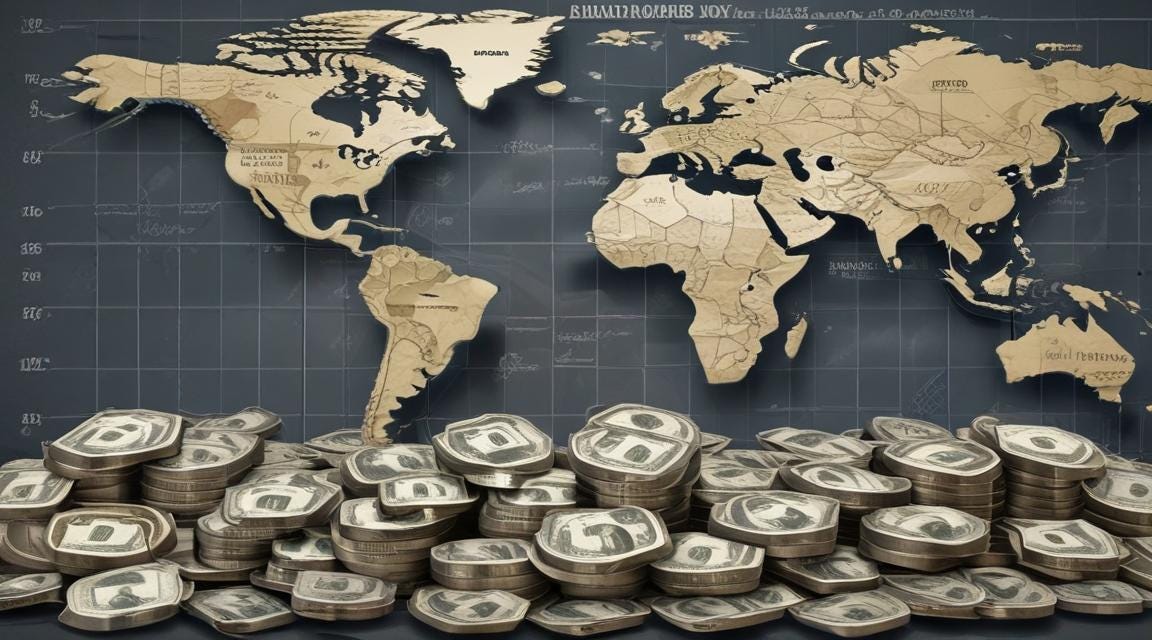Global Titans of Foreign Exchange Reserves
Exploring the Economic Stability and Strength of the World's Largest Reserve Holders
Foreign exchange reserves, or Forex reserves, refer to foreign-currency deposits held by nationals and monetary authorities. In broader terms, they also encompass gold reserves, special drawing rights (SDRs), and the IMF reserve position. This total figure is often more accurately described as official reserves, international reserves, or official international reserves.
The top five countries holding the most significant foreign exchange reserves exhibit a marked consistency within the international financial landscape. These countries maintain reserves exceeding 500 billion USD and have sustained such levels for at least one week. Only six countries have achieved this distinction: China, Japan, Switzerland, India, Russia, and Taiwan.
Until March 2020, Saudi Arabia ranked among the top five. However, subsequent events have drastically diminished its reserves. The steep decline in oil prices during the economic fallout from the global coronavirus pandemic, Saudi Arabia's ongoing oil price conflict with Russia, and the competitive pressures exerted by U.S. shale oil severely depleted its reserves.
China's impressive track record in reserve accumulation is undeniable. For 14 years, it has consistently held the largest reserves globally. This significant milestone demonstrates China's economic prowess and prudent financial management. Notably, China became the second country to reach $500 billion in reserves and the first to achieve the remarkable feat of $1 trillion. Additionally, it is the only country to reach net reserves of $2 trillion and $3 trillion, showcasing its exceptional economic strength and stability.
On the other hand, India has also made remarkable strides in building its foreign exchange reserves, currently ranking as the world's fourth-largest. On September 27, 2024, India's reserves crossed the $700 billion mark for the first time, making it the fifth country, after Switzerland, to achieve this milestone. It is a vital metric displaying India's growing economic power and resilience.
However, it's important to note that India's reserves have not always been robust. In 1991, during the Indian economic crisis, the country's reserves dwindled to a mere $5 billion, triggering subsequent economic liberalization. Since then, India has implemented prudent financial policies, resulting in a remarkable 127-fold increase in its reserves over three decades.
In September 2024, India's foreign exchange reserves reached a fresh all-time high of $704.88 billion, including 803.58 tons of gold reserves. This impressive reserve growth is due to numerous factors, including $30 billion in foreign inflows in 2024, led mainly by investments in local bonds after the inclusion in a crucial J.P. Morgan index.
Notably, the Bank of England and the Bank for International Settlements hold a significant portion of India's gold reserves—403.7 tons —while the remaining amount is held domestically. This strategic move provides security and ensures risk diversification by spreading gold holdings across multiple locations.
Bank of America forecasted that India's forex reserves may increase to as much as $745 billion by March 2026.
China and India's exceptional reserve accumulation reflects their strong economic fundamentals and prudent financial management. These reserves serve as buffers against external economic shocks, ensuring the stability and resilience of their respective economies.



